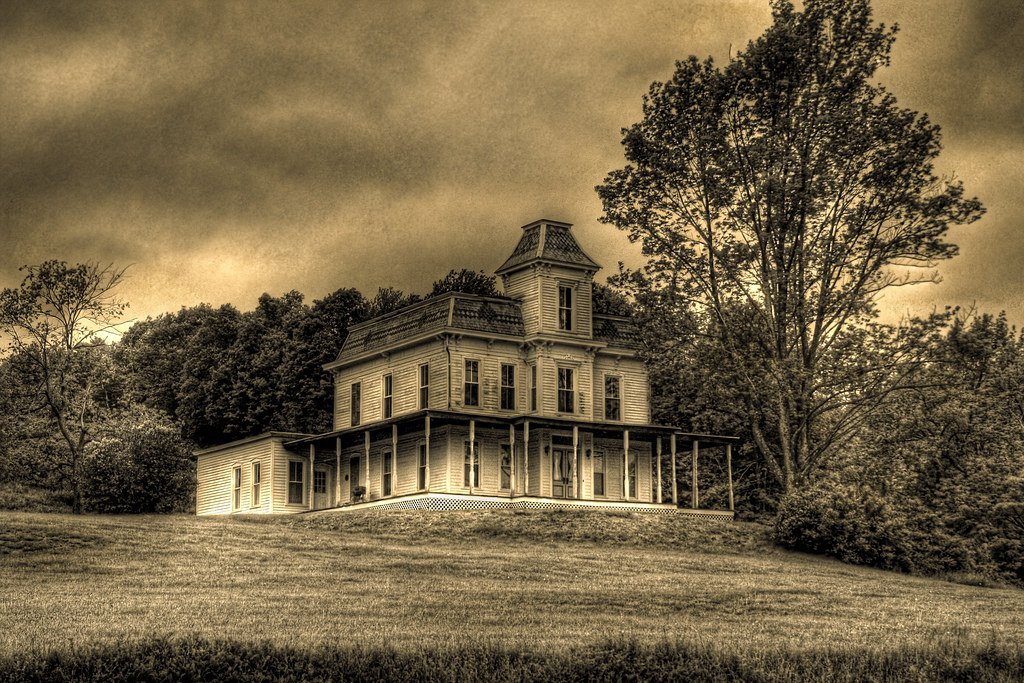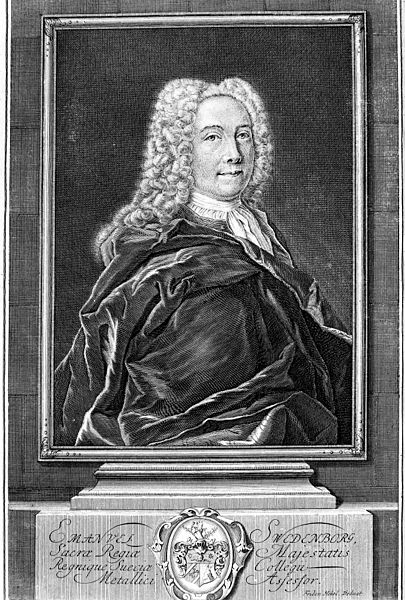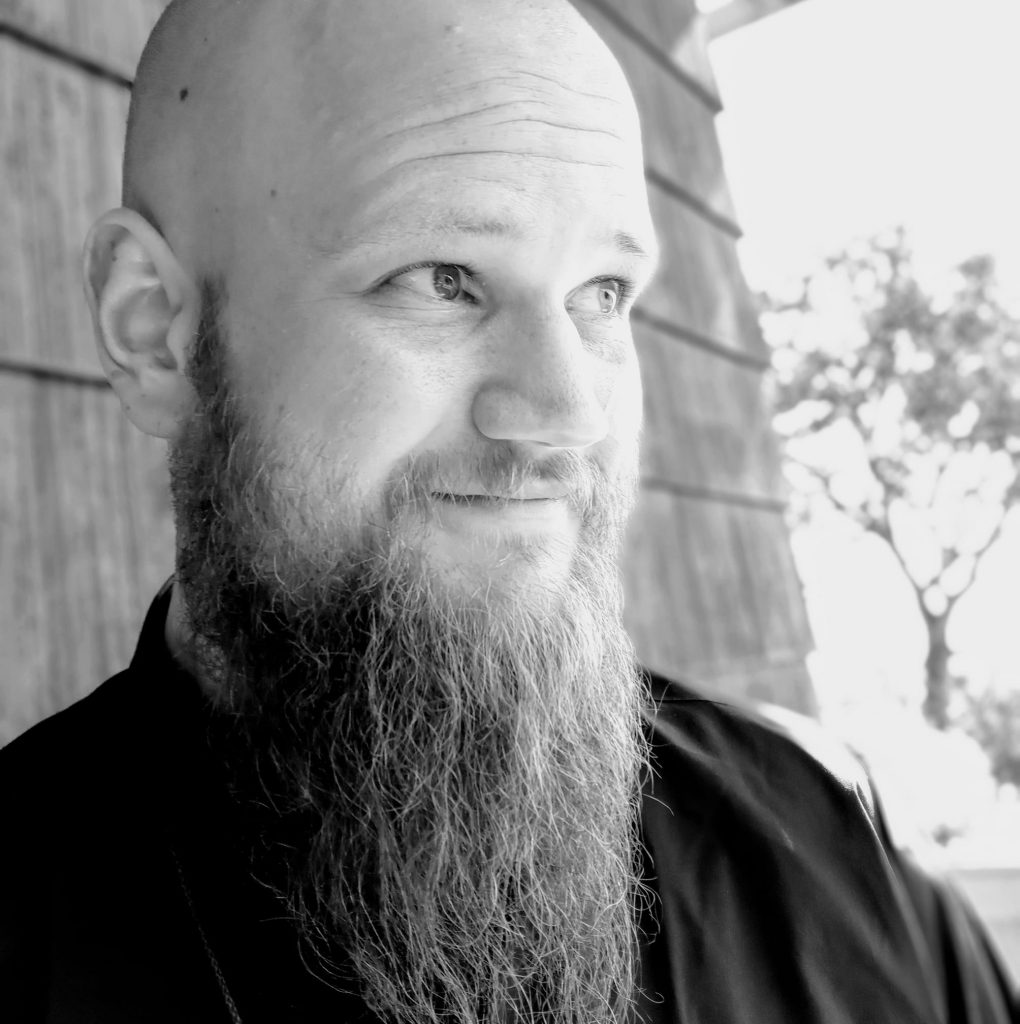
On April 29, Netflix released a brand new horror movie entitled “Things Heard and Seen”, starring oscar-nominee Amanda Seyfried (known from blockbusters such as Les Miserables, Mean Girls, and Mamma Mia!), written and directed by Shari Springer Berman and based on the novel All Things Cease to Appear by Elizabeth Brundage.
The film follows a college professor and his family, as they move into a new home in rural upstate New York, which is haunted by spirits, including a Swedenborgian ghost named Mrs. Smit, who had been murdered by her husband upon building the house.
The film begins with a quote from Swedenborg’s Spiritual Experiences §5685:
“This I can delare, that things that are in heaven are more real than things that are in the world”*
While it may seem like the stereotypical “haunted house” flick with the usual tropes, the film is unique in its explicit engagement with the mystical teachings of Emanuel Swedenborg, particularly as they relate to the afterlife and communication with spirits. The title itself is a reference to Swedenborg’s most popular published work, Heaven and Hell (1758), and its original full title Heaven and its Wonders and Hell, from Things Heard and Seen (“De Caelo et Eius Mirabilibus et de inferno, ex Auditis et Visis”), in which the Swedish sage describes his countless journeys to the spiritual world and encounters with the various beings residing there.
Throughout the movie, uniquely Swedenborgian spiritual and metaphysical concepts are mentioned, and his life, work and followers are depicted, which make for a unique, fascinating, and entertaining, albeit often inaccurate engagement with his spiritual system.
Things Heard and Seen appears to already be the most popular and well-known film inspired by Swedenborg (aside from 1998’s What Dreams May Come, starring Robin Williams, which has a more more indirect connection), and offers an opportunity for contemporary pop culture to discover and explore “New Church” spirituality and the actual richness of insight it provides when portrayed and approached properly, beyond the dramatic, flashy and provocative imagery of the movie.
Rather than being a review of the film, this blog series is meant to shed light on its underlying Swedenborgian principles, and explore the connections between Swedenborg, the paranormal, and popular culture.
HOW ACCURATE IS THE FILM IN ITS PORTRAYAL OF SWEDENBORGIANISM?
While the film does a decent job at hinting at several uniquely Swedenborgian metaphysical ideas, such as the constant presence and influence of spirits in our own inner lives, the notion that spirits are drawn to like-minded individuals, and a general sense of a benevolent overall spiritual and cosmological structure, both the notions of “hauntings” and the summoning or contacting of specific spirits of deceased people are not concepts which are emphasized in Swedenborgian spirituality, neither is the idea of people being “damned” or “bound” to specific physical locations, as the film insinuates.
While there is certainly an openness towards, and interest in such phenomena as Near Death Experiences, Spiritualism, and practical mysticism, Swedenborgians are not known to hold seances seeking out communication with specific spirits. This may be by far the most notable inaccuracy of the film, and one that is bound to worry actual Swedenborgians, who have a long history of rightly attempting to distance themselves from the spooky, strange, and otherworldly aura popular culture has sometimes associated with the great mystic.
DIDN’T SWEDENBORG TALK TO DEAD PEOPLE?

It is absolutely true that one of Swedenborg’s major claims, and sources for his writings, were his alleged conversations with “angels and spirits”, all of whom, he writes, used to be human beings who have deceased and are now living in the fullness of the spiritual world, which is intimately connected to our “natural” conscious state. Arguably, his mystical writings constitute the largest, most extensive record of communication with the dead known to scholars, making the Tibetan Book of the Dead and the Seth Material look pale in comparison as far as volume is concerned.
At the same time, he presents his encounters as experiences and realms he was led to as part of an overall revelatory process about the nature of spirit, rather than a specific “seeking out” of particular entities, something that distinguishes him from other mediums and mystics. The objective, for Swedenborg, was not to learn earthly information from specific beings, but rather a holistic experience of the subtle realms of consciousness, which to him, are intimately connected to the spiritual world.
One reason why Swedenborgians have not been known to practice channeling is Swedenborg’s explicit warnings about the matter, claiming that while communication with spirits is certainly possible, it is not advisable for most people, and likely to have problematic outcomes:
“It is clear how dangerous it is on this planet, when spirits speak with people, or people listen to spirits operating in them, if they do not have faith in the Lord. If they have faith, it does no harm, for the Lord liberates them; but if they do not have faith . . . they are not only persuaded that it is the holy spirit [speaking], but are also aroused and incited toward wicked acts.”*
-Spiritual Experiences §3781
According to Swedenborg, the spirits with the greatest interest in such activities are exactly the ones that are better avoided…
It seems important to note, however that there are exceptions to Swedenborg’s general approach toward communicating with the spirits of deceased people, which is to focus on being led by the divine by means of connections with benevolent spirits, and inquiring about universal spiritual truths from both angels and demons, rather than invoking the presence of specific beings.
Perhaps the most famous example of explicit “Necromancy” (“the supposed practice of communicating with the dead”**, generally associated with an active and intentional seeking out or invocation of specific spirits) is his supposed encounter with Queen Louisa Ulrika of Sweden in 1761. As the story goes, Queen Louisa requested that Swedenborg contact her deceased brother, Prince Augustus, who had died in 1758, and to relay a private question to him. Swedenborg is said to have returned to her a few weeks later, providing the Queen with Augustus’ answer to the question, which she claimed could have only been known by her brother, confirming Swedenborg’s successful contact.
Just a year earlier, Swedenborg had supposedly been asked by yet another lady of high status, the widow of a deceased French diplomat, to contact him regarding the location of an important receipt which had been missing, the location of which only her late husband would know. Upon Swedenborg’s inquiry in the spiritual world, he appeared to his widow in a dream, and informed her, accurately, of the location of the document.

While these anecdotes are often used as examples of Swedenborg’s “evidential mediumship” and prominently touted by his followers as confirmation of his supernatural abilities, they present a challenge to those who try to disassociate him from the practice of necromancy. Be that as it may, his message to the world about talking to specific deceased spiritual beings can be most easily summed up as “Better not to mess with it.”
There are other examples of Swedenborg seeking out and encountering the spirits of specific personalities, including in his published theological works, such as prominent philosophers and theologians, in the worlds beyond, although he maintains that “special permission” was granted to him in order to convey particular spiritual ideas and principles, and that generally, important popular figures are not inclined to be easily contacted by “mortals”, and are better left alone...
Next Week: “Part II – Swedenborg and Haunted Houses“:
* Swedenborg, Emanuel. Emanuel Swedenborg’s Journal of Dreams and Spiritual Experiences. Translated by C. Th Odhner. Bryn Athyn, PA: Academy Book Room, 1918.
** Oxford English Dictionary. Accessed May 7, 2021. https://www.lexico.com/en/definition/necromancy

Rev. Thom Muller is pastor of Hillside, an Urban Sanctuary, in El Cerrito, California, as well as senior editor of Our Daily Bread. His passions include the intersection of spirituality and psychology, interfaith theology, and the Western esoteric tradition. He was ordained into the ministry of the Swedenborgian Church of North America in 2016, upon receiving his theological education at Bryn Athyn College of the New Church and the Center for Swedenborgian Studies / Pacific School of Religion at the Graduate Theological Union in Berkeley, CA.